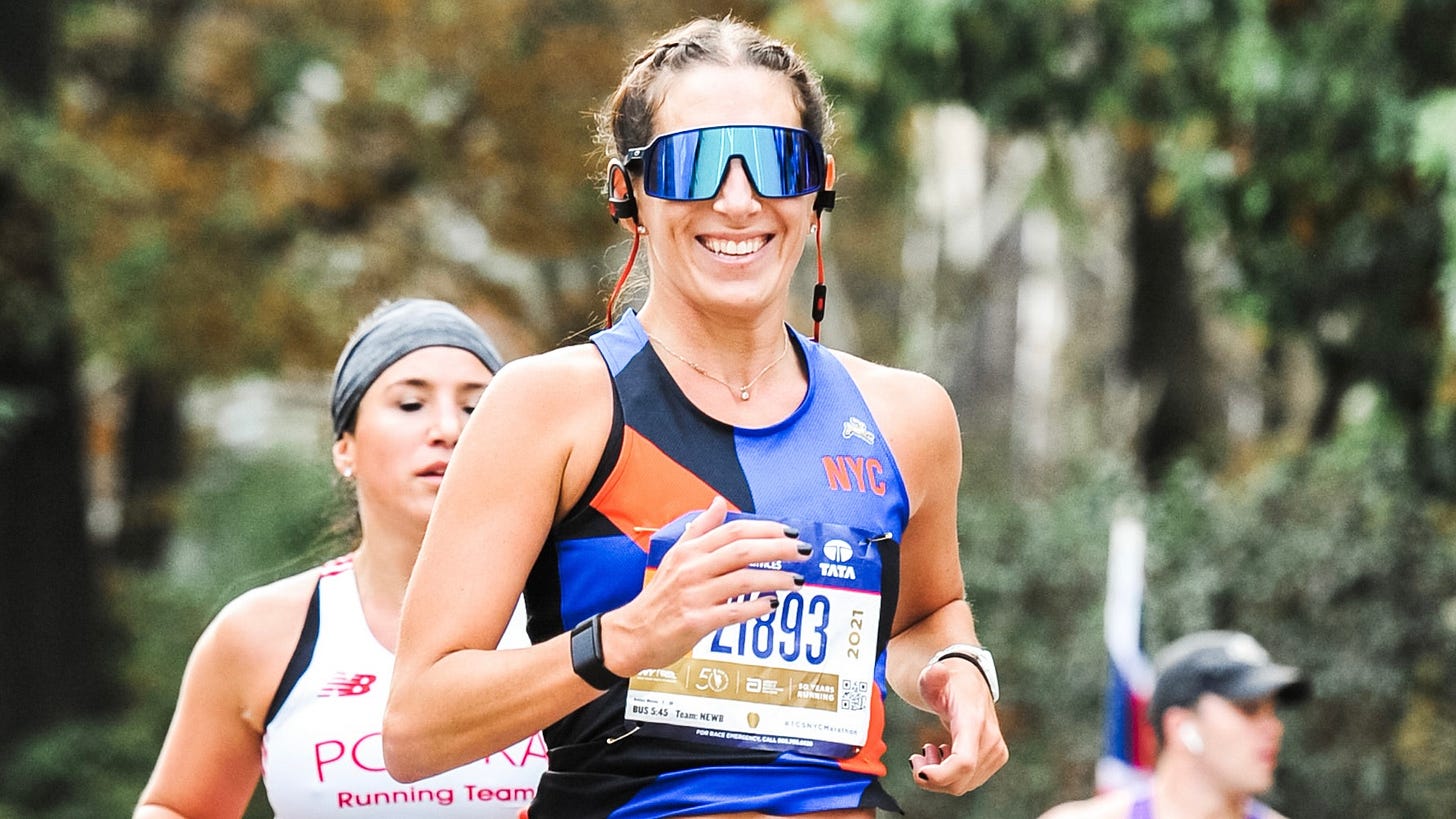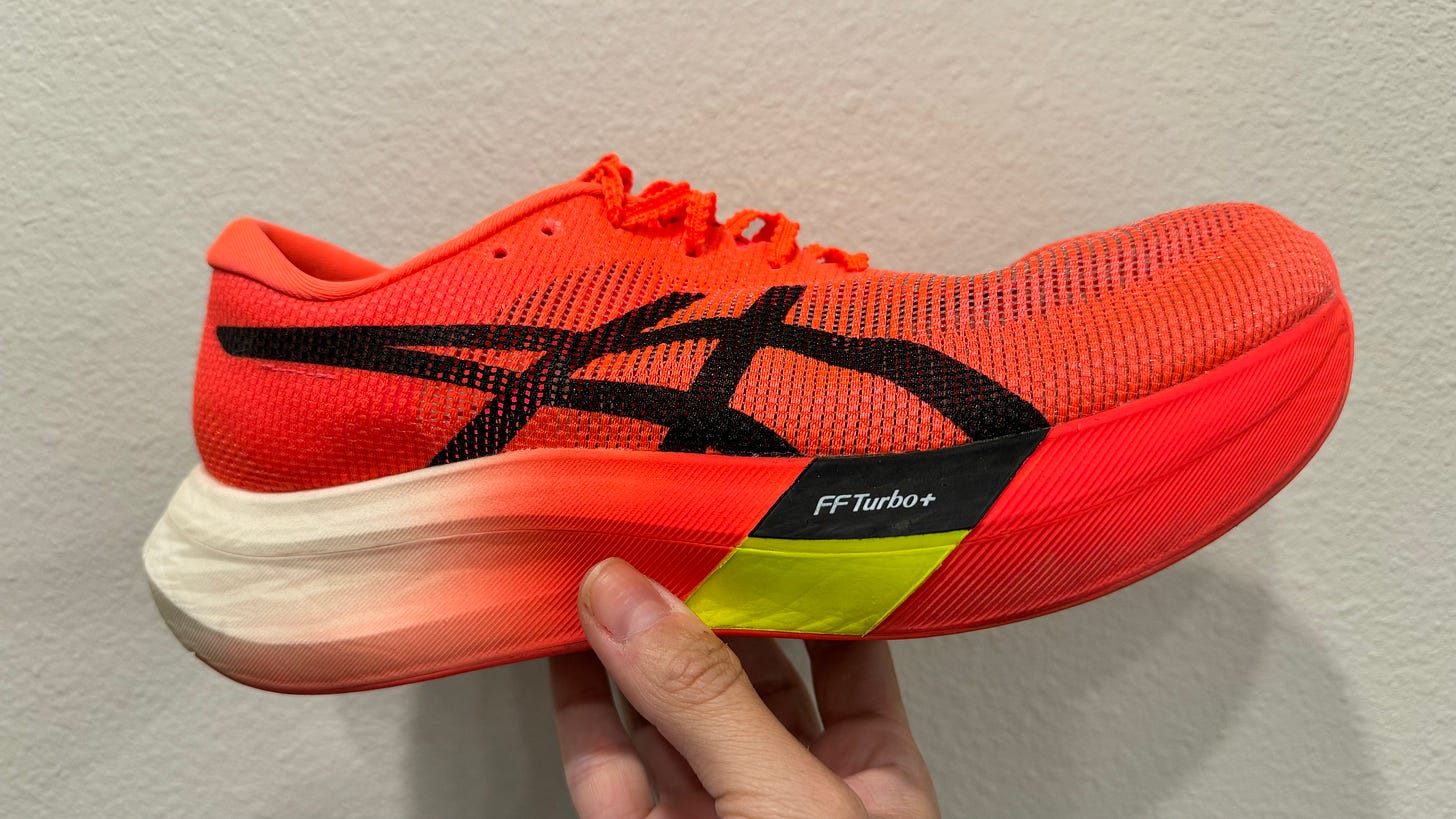Why It's So Hard to Get Into the NYC Marathon
Like it or not, running is more popular than ever—and that has a direct effect on the percentage of applicants who get accepted to the sport's most popular events.
The New York City Marathon can feel like the Super Bowl, Grammys, and Oscars of running all rolled into one. It’s the biggest marathon in the world, and a bucket list event for beginner runners and elite athletes alike (Eliud Kipchoge has yet to run it, despite his goal of running and winning every World Marathon Majors race).
This year, the New York Road Runners received almost 165,000 applications for the 2024 race—a number second only to the 2020 race, which was later canceled due to the COVID-19 pandemic. And last week, the organization announced that approximately 4 percent of those who applied for the 2024 New York City Marathon drawing were accepted into the race. That means just 6,600 people were accepted via the lottery. More than 17,000 NYRR members who applied and met the eligibility criteria were automatically entered into a new NYRR Member-Only Second-Chance Drawing, and approximately four percent were accepted from that pool. That’s another 680 accepted runners.
OK, but—the race regularly has 50,000-plus finishers. In 2023, the third largest edition of the race in the event’s history, there were 51,402 total finishers. What about the other 42,000ish spots? In addition to the lottery, thousands of bibs are allocated to elites, time qualifiers, charity organizations, run clubs, NYRR’s own 9+1 program, tour operators, race sponsors, and runners who have completed 15 or more NYC Marathons. (For example, NYRR expects around 14,000 runners to participate in the New York City Marathon Charity Program, which opened on Thursday and supports over 200 organizations.)
And that’s true for all the World Major Marathons, which see huge numbers of applicants for limited fields. For the first time in history, more than half a million people (578,374 to be exact) applied for the 2024 TCS London Marathon, setting a new world record. In 2023, 410,000 people entered the lottery; the acceptance rate isn’t public, but there were 53,249 finishers, which works out to less than 13 percent of that applicant pool. The Tokyo Marathon receives over 300,000 applicants each year, and the 2024 race was the first in four years to welcome the full capacity of 38,000 runners—also under 13 percent.
And, of course, there’s the Boston Marathon. The only mass-participation marathon to require qualifying times has seen such an increase in applicants in recent years that it had to tighten the standard by five minutes in 2020—and, even then, runners had to run 5:29 faster than the qualifying time for their age and gender to get into the 2024 race. It caused such an uproar, I bet we’re going to see the standard get even faster sooner rather than later. (Katy Abbott of Athletikaty did a deep dive into the bib breakdown for the 2024 Boston Marathon, if you’re curious what that looks like.)
The reality is running is more popular than ever. Five percent of runners on Strava ran a 26.2-mile race in 2023, up 20 percent from last year, according to the fitness app’s annual Year in Sport report. Average registrations in 2023 grew by 5.8 percent compared to 2022, internal data from RunSignup indicated (representing an estimated 35-40 percent of the U.S. endurance market).
Unfortunately, the field size for these bucket list races can’t grow on par with rising interest. These caps exist to prevent congested courses, ensure that there are enough health and safety personnel on course, and respect the capacity of the towns and neighborhoods the course runs through.
The Boston Marathon, for example, runs through seven smaller towns before reaching Boston proper, and some residents’ homes are directly on the course; in 2023, an unidentified Boston marathon runner was caught pooping on a stranger's lawn in a doorbell video, a move that certainly didn’t endear the runners to locals. And people complain about the obscenely early bus times for the NYC Marathon, but the reason marathoners are bussed out to Staten Island at the crack of dawn is because the Verrazano Bridge closes to all traffic at 7 a.m. and doesn’t open again until 4 p.m. That’s a huge artery into Brooklyn to close for eight hours, and if the race were to add more waves—start times already span from 8 a.m. to 12 p.m.—it would push that closure back and inconvenience people even further.
Hosting a marathon in a big city costs a lot of money: Race organizers have to pay for permits to hold the event, in addition to paying law enforcement, medical personnel, and other workers to safely staff it. In 2020, the Los Angeles Marathon had to re-route its course to avoid Santa Monica, because the city demanded “dramatically increased costs” in order to stage the finish line there.
As a result, marathons are big business. And businesses need to attract new customers—because that’s what you are, when you buy into a big race—to grow. One of the ways they do that is via media, including new media like influencers and content creators. These storytellers use their experiences with races for different purposes: Reporters can highlight issues of exclusion and racism (see: the altercation between the Newton police and Black run club members at the 2023 Boston Marathon) to hold organizers accountable and demand change for future events; influencers can share stories of representation that might inspire people who haven’t seen people like them in the sport.
So you can’t blame influencers, content creators, or anyone running under a sponsor bib for “taking spots away from people who are working really, really hard to qualify,” as Molly Seidel unfortunately said out loud on her podcast called “I Hate My Thoughts with Molly & Izzy Seidel” (hot take: if you hate your thoughts that much, maybe keep them to yourself). And you can’t blame people who run these races multiple times for taking bibs from hopeful first-timers. The amount of bibs allocated to both of those categories is minimal, and this perspective just shows a fundamental misunderstanding of the business of major marathons.
Running is very much a solo sport, even if you run with a group or a club. And that makes it really easy to get caught up in your goals and your journey. But it’s important to take a step back and remember that the larger running community and industry doesn’t revolve around any one person’s wants. Major marathons are mass participation events, and everyone who gets into one deserves to be there—whether they’re an elite athlete, a speedy amateur, a content creator, or a back of the pack runner. Because of their popularity or prestige, some races have to enforce time standards, capped field sizes, and other ways of managing the number of people who show up at the start line. It’s not personal.
But if race is that important to you, for whatever personal reasons, know your options. Counting solely on a lottery system, especially one with hundreds of thousands of applicants, is a recipe for disappointment. Participate in your local run club, raise money for a charity, consider joining a marathon tour group. You can still get into your goal races if you have a plan in place in case the lottery route doesn’t work out. Just remember that every single person who shows up on race day—no matter how they got their bib—has every right to be here.
How Hustle Culture Wreaks Havoc In Running
You’re probably familiar with the idea of hustle culture: Millennials (hi, it’s me) were raised on the seemingly simple idea that hard work begets success. Over the past decade or so, that perspective has created this pervasive sense that we always have to be doing more, more, more—often, in a way that sacrifices self-care—in order to achieve our goals.
the rundown
ASICS Metaspeed Sky Paris
I PRed the Tokyo Marathon in the last iteration of the Metaspeed, and this one feels even faster. Every run I’ve done in these has felt effortlessly speedy. It’s super light—about 185 grams, which is about the same as a Nike Vaporfly—thanks to a generous slab of FF Turbo+ foam and a new upper material that’s airy without sacrificing security. It’s also built around a new last for better arch support and more stability. ASICS also revamped the Metaspeed Edge; the Sky has a carbon plate positioned closer to the foot, with more foam underneath the plate, for people who increase their stride length as they pick up speed, while the carbon plate in the Edge dips a little lower under the forefoot, optimizing the positioning for people who increase their cadence as they get faster. I tried both, and the Sky definitely felt better for my gait.
Why Cheat In Marathons?
I will never not read an article that delves into this inexplicable behavior, and The Economist included lots of head-scratching cheating examples in this article, which also examines the social media influence behind course-cutting. I liked historian Sam Edwards’ comparison of cheating to “‘photo-shopping an insta image before posting’: both tweak reality in pursuit of realistic-enough perfection.” It’s another indication of the chokehold social media has over our lives and the drawbacks of “hustle culture”or, as Edward calls it, “competitive life-style performance”—in the running world.
Lululemon FURTHER Product Breakdown
There was a ton of coverage around the Lululemon FURTHER project, and while what the athletes did was pretty incredible, one of the things I found most interesting was the product breakdown from Peter Tierney, a Senior Research Scientist at Lululemon Product Innovation. The brand put a ton of thought into every individual piece they designed for each athlete, and things like the ice tank and vest, onesies with waistband storage, pocket bras, and short and long sleeve shirts with direct access to the bra really stood out to me. I hope we see some of these features in consumer products soon!
Super Shoes Aren’t Just for Elite Runners
This is one of the shoe trends I’m most interested in this year, and I’m almost mad that Footwear News beat me to it in terms of coverage (you better believe I’ve been pitching it) but this article is so well-reported I’m going to put my emotions aside. It’s mostly about how super shoes have truly permeated the entire industry, and I’m especially interested in the ways in which companies are taking a more inclusive approach as well as how they can serve as a testing ground for new innovations. I know there are even more varied super shoe options coming that will appeal to different types of runner, so this is a great primer for anyone trying to understand all the hype.






One good thing about the growth of the sport is that other “smaller” marathons will get a chance to grow or take a next step, as in finding sponsors for example. Runners will get more and more cool marathons to run. Also, more cities can start organizing marathons for the first time. It’s all good.
The more runners the better :)